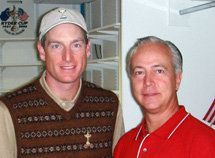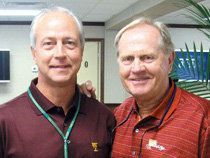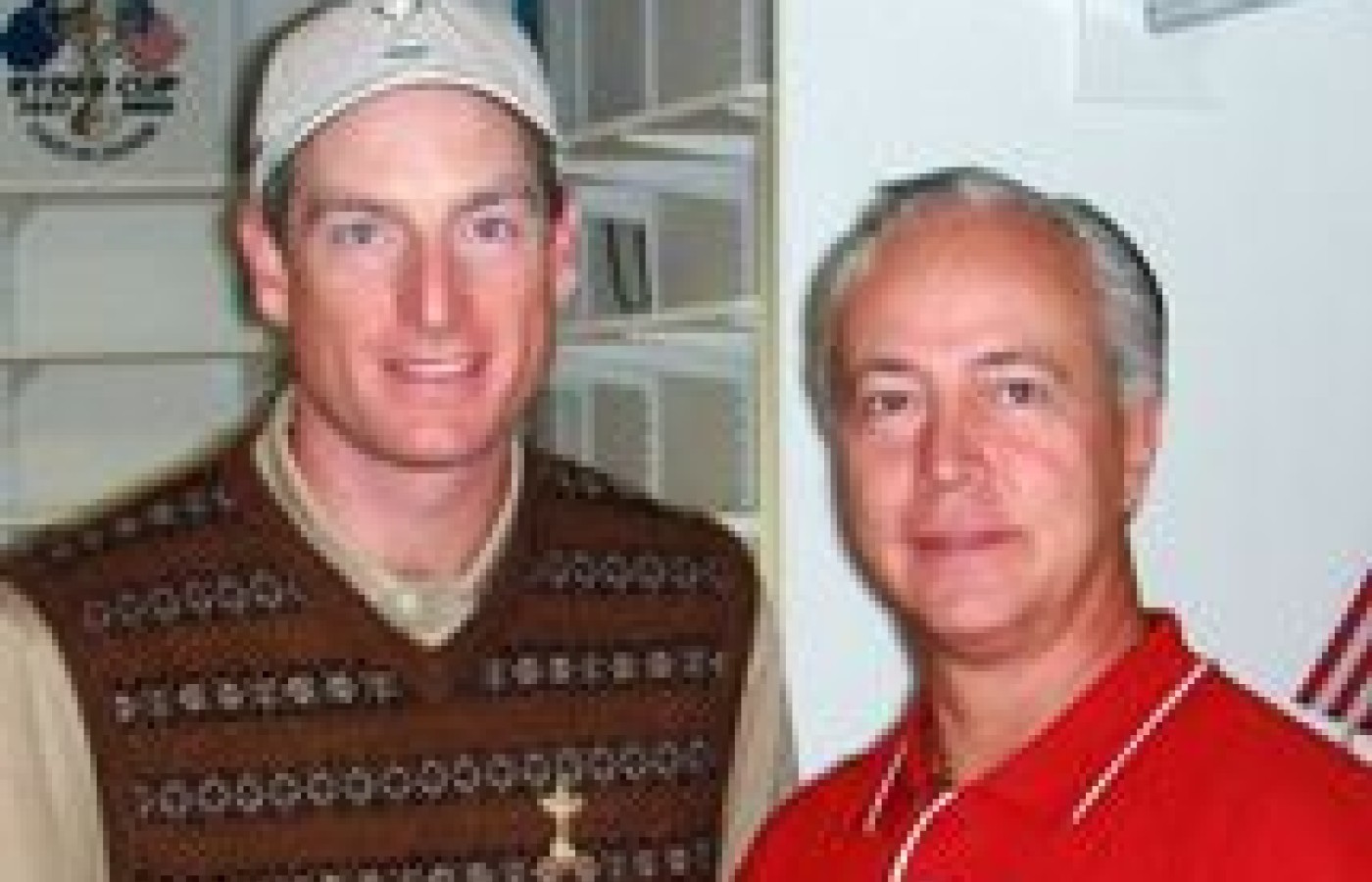New York's highest court of appeals has held that no-fault insurers cannot deny no-fault benefits where they unilaterally determine that a provider has committed misconduct based upon alleged fraudulent conduct. The Court held that this authority belongs solely to state regulators, specifically New York's Board of Regents, which oversees professional licensing and discipline. This follows a similar recent ruling in Florida reported in this publication.
18 Holes With a PGA Chiropractor
Dr. Tom LaFountain first began working with the Professional Golfers Association (PGA) in 1997. While serving as a chiropractic team physician to the U.S. speedskating team, a friend who was a physical therapist and a member of the PGA staff approached him and requested he fill a void left by the untimely passing of the chiropractor who had been working with the PGA. Thus began a storied relationship that has brought chiropractic care to the forefront of a sport played by millions and viewed by millions more.

According to Dr. LaFountain, director of chiropractic services for the PGA since 2000, 72 percent of pro golfers receive regular chiropractic care provided by PGA chiropractic staff. No wonder, considering the PGA sponsors more than 50 events from Jan. 1 through Labor Day weekend each year. That's ample opportunity to suffer an injury, particularly a back injury, due to the repetitive rotation and torque placed on the spine during countless thousands of golf swings. LaFountain estimates 80 percent of golf injuries involve the lower back.
After serving as the lone chiropractor for the tour for several years, Dr. LaFountain recommended additional DCs be recruited to keep pace with the golfers' increasing demands for care. The PGA granted him that expansion opportunity in 1999. Eventually, Dr. LaFountain formed Professional Sports Care (PSC), which now contracts directly with the PGA. He is on tour 12 weeks a year, treating golfers and sharing the message of health through chiropractic. In this exclusive interview with Dynamic Chiropractic, Dr. LaFountain describes life as a chiropractor on the PGA Tour.
Let's start with some basics. Why did you decide to become a chiropractor? Did any particular experience lead you toward the profession?

My decision to become a chiropractor came in my junior year while at Hamilton College in Clinton, N.Y. I was an economics major and intent on going to law school; however, an injury changed all that. I was a quarterback on the football team, and one day I was hit from behind pretty hard and went down. I couldn't get up and had to be helped off the field. I went to a local orthopedic surgeon who told me I would not play football again and that I had to be admitted to the hospital for traction. My father had gone to a chiropractor (Dr. Richard Falanga in Oswego, N.Y.) for years and told my doctor he would like to get another opinion. I subsequently saw a chiropractor and was playing football three weeks later. I became very interested in chiropractic after that. Dr. Falanga taught me about soft-tissue therapy and manipulation. I was not hospitalized and did not have to take medication. I changed my major after that, focusing on the science courses necessary to enter chiropractic school.
Give our readers a little background - where did you attend chiropractic school, how did you establish your practice, etc.?
I attended New York Chiropractic College (NYCC) and graduated in April 1982. I subsequently completed my diplomate in chiropractic orthopedics from National. After college, I returned to my hometown (Utica, N.Y.) to establish my practice. Since people at that time were not always aware of what to expect at a chiropractor's office, I spent every moment informing people of what I did. I spoke at my brother's fitness center, service organizations, gymnastics clubs and high-school health classes, and volunteered to assist the high-school physician at football and hockey games. It worked out well, and my schedule got pretty busy within six months.
What drew you to professional sports, first as a chiropractor with the U.S. speedskating team and then with the PGA?
I played sports all of my life. At family gatherings, everyone was always playing catch or throwing a football around. I started as quarterback all four years in high school and college, and for my high school and college baseball teams at third base. I always loved the competition and the physical and mental challenges sports provided. Seeing what the body was capable of doing and how training, diet and preventative health care could enhance the body's capabilities consumed my interest.
In 1990, I was chosen to work as a volunteer team chiropractic physician at the Olympic Training Center in Colorado Springs, Colo. I was asked by four or five of the national governing boards to work directly with them and chose the U.S. speedskating team since they trained in nearby Lake Placid, N.Y. Over the seven years I worked with the team, I covered World Cup events in Haranveen, Holland; Warsaw, Poland; and Berlin, as well as the Winter Olympics in Albertville, France (1992) and Lillihammar, Norway (1994).
In 1997, I was asked by a friend of mine - a physical therapist who worked with the U.S. luge team - if I wanted to do some work with the PGA. He had gone from the luge team to the PGA a couple of years earlier. My trial tournament was at the Riviera Country Club in Los Angeles. The PGA liked what I did, and I really enjoyed working as a team with PTs and orthopedists, and with the golfers. I am now in my 12th year with the PGA, and our Professional Sports Care (PSC) staff has grown to 14 chiropractors nationally, covering more than 75 PGA and Champions Tour events each year.
What's an average day like (on vs. off tour)?
When I'm in my office, my typical day begins at 8 a.m. and continues until 5-6 p.m. with a half-hour break for lunch. During the weeks I'm on tour, my day begins at approximately 5:30 a.m. and ends at around 7 p.m.
What are the most common injuries you encounter on the PGA Tour?
The most common area treated on the PGA Tour is the lower back. Data compiled by PSC revealed the following injury profile in 2007: 68 percent lower back, sacroiliac, lower thoracic; 19 percent cervical; 7 percent shoulder; and 6 percent wrist, forearm and hand. PSC was founded in 2007, and is responsible for choosing and preparing chiropractors for work on the PGA Tour and compiling injury data to better evaluate injuries and treatment effectiveness.
Do you have direct access to the pro golfers or do you have to go through a medical doctor?
Chiropractors on the PGA Tour have direct access to evaluation, treatment and rehabilitation of the golfers. Working as a team, they also have direct access to discussing and securing input from physical therapists and orthopedists.
How are you compensated for your services? Do the pros pay you individually for treatment?
As independent contractors hired by Professional Sports Care and working for the PGA Tour, we are paid a salary and per diem, and reimbursed for air travel and car rental expenses.
How many chiropractors are contracted by the PGA?
There are only 14 chiropractors on the mainland (16, if you include Hawaii) who are official chiropractors of the PGA Tour. The PGA prefers to keep the number down to ensure more consistency in treatments from doctor to doctor. PSC is the chiropractic arm of the tour and is responsible for evaluating, preparing, and choosing chiropractic physicians to work on the PGA golfers.
Do the pros receive chiropractic care on their own, or just while on tour?
Quite a few golfers go to their own chiropractors when they are at home. There are a couple of chiropractors who are hired by individual golfers (mostly from Europe) who travel with them to events; however, most golfers are treated by the PGA Tour chiropractic staff.
During a tournament, do you treat the pros before, during and/or after each round?
Before each round, many golfers come in for a prestretch that helps them loosen up before their round. They also can get treatment before their round if they need it. More extensive treatments usually are given after their round. Treatment is seldom given during a round. Periodically, it is done at the golfer's request and can be a little stressful, since the chiropractor is only given 2-3 minutes at each episode to do their work and 3-4 holes to help the golfer. During the 2005 President's Cup, I ended up walking 36 holes each day for three days to do work on Tiger Woods and Jim Furyk. That is uncommon, but with a 12-on 12-international (team) tournament, it was the only way to keep the golfers playing.
What do you find most challenging (and most rewarding) about your work?
The most challenging aspect of my work also is the most rewarding - treating a golfer when called out on the course or treating a golfer in acute pain right before their round and getting them out of pain and functioning as soon as possible. Often there is not a lot of time to spare and you have to differentially diagnose and treat with a high level of efficiency.
Any advice to chiropractors interested in becoming involved in this growing field (treating professional athletes)?
Chiropractors interested in becoming involved in treating professional athletes would benefit from the following advice: Be prepared to work as a team with other health professionals, work hard when you get your chance and be patient for your opportunity to come. Prior to your involvement, put your time in with your education. Your treatment skills and knowledge in differential diagnosis and the sport you are working with biomechanically are vital to your preparation.
Editor's Note: Professional Sports Care prepares chiropractors who are trained and available to care for PGA golfers. Dr. LaFountain would like enough chiropractors involved to cover each of the six regions - Northeast, Southeast, Midwest/North, Midwest/South, Northwest and Southwest - to provide treatment at regional tournaments.
A doctor of chiropractic degree is required, and most of the group's members are diplomates in either chiropractic orthopedics or sports medicine as a certified chiropractic sports physician. Candidates who are selected to participate in the program refine their skills specific to golf.
As mentioned, the PGA season runs from Jan. 1 through Labor Day weekend. One tournament takes place after Labor Day - either the President's Cup or Ryder Cup event. Once selected, participants are assigned to work tour events within their regions throughout the season (ideally five events per chiropractor). The doctors receive four weeks' notice prior to each event and information on PGA protocols, travel arrangements, reimbursement for services, and additional business details, enabling the DC to assume both clinical and logistical responsibilities. Once placed on the PSC active list, a chiropractor remains as long as they wish. Annual seminars help the doctors stay abreast of the latest golf-related techniques and treatments.
The PSC program is unrolling through a series of phases. Future plans include the creation of coursework that will enable chiropractors to become certified as "chiropractic golf specialists." Instruction would include gaining expertise with common golf injuries and best-treatment options. Information is derived through the collection of data for the past 13 years on the PGA Tour. Dr. LaFountain has selected NYCC, his alma mater, for the creation and instruction of this coursework.
According to Dr. LaFountain, subsequent phases of the program could include providing additional complementary and alternative medicine (CAM) therapies such as acupuncture and nutrition when needed by the players. He also wants to expand the program internationally. At a meeting in London this month, Dr. LaFountain will present his concept to representatives of the Asian and European golf tours.
For more information, visit www.tomlafountain.com.



